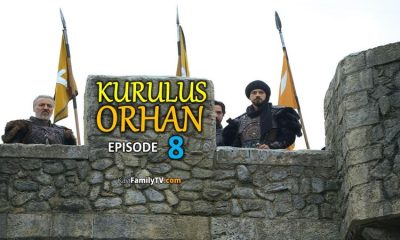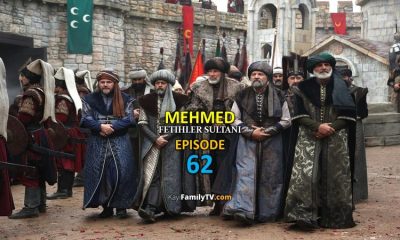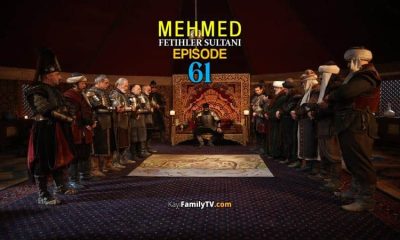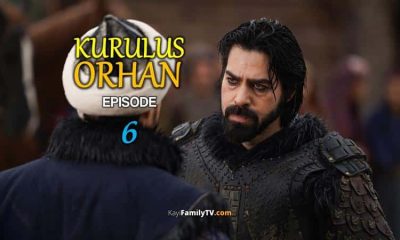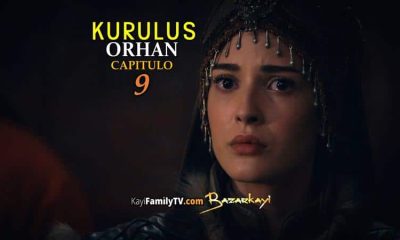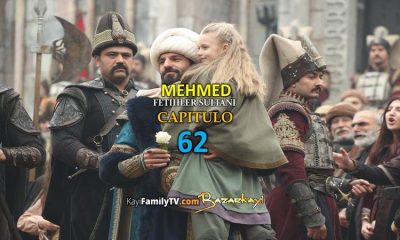Selcuklu Devleti
WHO IS SULTAN ALPARSLAN?
THE LIFE OF SULTAN ALPARSLAN. WHO IS SULTAN ALPARSLAN? THE BATTLE OF 1071 MALAZGIRT (MANZIKERT).
“We are with a depleted force. Either I will achieve the goal or I will go as a martyr to Paradise. If I die, then know that my son”
Many years before Salāh al-Dīn’s magnanimity towards the defeated barbaric crusaders, another Muslim leader had shown the world how a Muslim ruler behaves with mercy and restraint in this very month of August.
Soon after the advent of Islām, the Roman Empire faced an energetic new challenger in the Umayyad Caliphate. The Umayyads made two serious attempts to conquer the Roman Empire, laying siege to Constantinople in 674-8 CE and again in 717 CE. Fortunately for Byzantium, the Umayyad Caliphate was overthrown in 750 CE by the Abbasids, who gave up such ambitious plans, opting instead for regular military campaigns that sometimes penetrated right into the heart of Byzantine Anatolia. These raids culminated in Caliph Mu’tasim’s (833-842 CE) destruction of Amorium in central western Anatolia in 838 CE.
By the end of the eighth century however, Byzantium’s situation began to improve whereas the Abbasid economy was in decline and the government was paralysed by religious and political factionalism – this was the height of heresy with philosophers, mu’tazilites and bātinites. The Byzantines exploited Abbasid disunity to take the offensive and over the course of two centuries recovered their lost provinces of Illyricum, Greece, Bulgaria, Northern Syria, Cilicia, and Armenia. At this same time that the Byzantines were celebrating their revival, a new player in international affairs arrived on the scene – the Seljuk Turks who were a family of nomadic Oghuz Turks who had converted to Islām around the end of the tenth century. Alp Arslan and events leading to the Battle.
In 1063 CE (454 AH), Tughril’s nephew, Alp Arslan became Sultan of Persia and Iraq. His actual name was Muḥammad ibn Dāwūd and came to be known as Alp Arslan which means ‘heroic lion’ or ‘courageous lion’. His vizier (Chief Administrator), Nizam al-Mulk (Abu Ali Hasan ibn Ali Tusi), who was also a scholar came to be known as one of the greatest viziers and would go on to establish the esteemed Nizamiyah Madrasa – Imām Ghazzāli was to be one of its rectors.
Sultan Alp Arslan was a merciful and generous leader, even against his enemies which proved to be a key feature during his rule. In the year 1066 (459AH), the ruler in the area of Kirman called Qara Arslan, rebelled against Alp Arslan. After marching towards Kirman and one of his detachment forces being defeated by Alp Arslan, Qara sought forgiveness from Alp, who received him graciously. The Sultan restored him to his kingdom and changed nothing in his position.
In 1069 CE (462 AH), the envoy of the ruler of Makkah, Muhammad ibn Abu Hashim visited Sultan Alp Arslan to inform him of the introduction of the khutbah (sermon) at Makkah in the name of the Caliph, al-Qa’im bi-Amr Allah and the Sultan and the dropping of the khutbah for the Fatimid ruler of Egypt and that they had abandoned the call to prayer with the Fatimid formula of “Hayya a’la khayril ‘amal” (‘Hasten towards the best of action’). The Sultan gave him 30,000 dinars and robes of honour and arranged an annual pension.
Sultan Alp Arslan regarded the Fatimid Caliphate of Egypt as his main enemy; he had no desire to engage the neighbouring Byzantines in unnecessary hostilities and as such, in the same year of 1069, he entered into a treaty where he had committed to preventing Seljuk raiding on Byzantine territory.
In 1071 CE (436AH), Sultan Alp Arslan made his way to Edessa in Syria where it was reported to him that although the khutbah there went out in the name of the Caliph, they continued to pronounce the adhan of the Fatimid and as such, Sultan Alp Arslan marched towards them. The leader there, Mahmud ibn Salih sought Sultan Alp Arslan’s forgiveness with his mother in attendance. Sultan Alp Arslan received them both with kindness, gave robes of honour to Mahmud and restored him to his town.
In the meantime, Romanus needed a decisive victory not only to protect Armenia but also his throne and, in the summer of 1071 CE, Romanus decided to gamble everything on a massive eastern campaign that would draw the Seljuk’s into a engagement with Byzantine. In February 1071 CE, Romanus sent an embassy to Alp Arslan to renew the treaty of 1069 CE. Romanus’ envoys reached the Sultan outside Edessa, which he was besieging at the time. Keen to secure his northern flank against Byzantine attack, Alp Arslan happily agreed to the terms, abandoned the siege and immediately led his army south to attack Aleppo in Fatimid Syria. Aleppo was subdued and introduced the khutbahs in the name of Caliph al-Qā’im bi-amr Allāh and Sultan Alp Arslan. It has been recorded that the commoners in the city took away the rugs in the Mosque saying “These are Ali ibn Abi Tālib’s rugs, let Abū Bakr bring rugs for his followers to pray on”.
The offer to renew the peace treaty by Romanus was a key element of Romanus’ plan, distracting the Sultan long enough to allow Romanus to lead an army into Armenia and recover the lost fortresses before the Seljuks had time to respond. Romanus’ offer to renew the treaty while at the same time preparing for a war was deceitful, but the use of deceit in warfare was a skill the Byzantines prized very highly. Byzantine tactical manuals regularly recommended using ploys, deceit and negotiation and to either avoid battle or gain advantage.
The Battle of Manzikert.
Romanus marched with 200,000 men, Greeks, Franks, Russians, Georgians, Armenians and many others. Many historians such as Matthew of Edessa claim the Byzantine army exceeded one million men [5] – Gibbons claims it was the largest army ever fielded by the Roman Empire, East or West. They came with much equipment and in great pomp and to attack the lands of Islām arriving in Malazgrid, also known as Manzikert.
News reached Sultan Alp Arslan when he was laying siege in Azerbaijan. Sultan Alp Arslan knew that he would not be able to raise his army who were far away and whilst the enemy was close. He gathered the men he had with him which numbered around 15,000. They then marched on and when they drew near the enemy, they encountered an advance guard of the Byzantines of around 10,000. After a brief engagement, the advance guard fled. When Sultan Alp Arslan drew nearer, he sent a message to Emperor Romanus for a truce but this was emphatically refused by Romanus.
It is said that before battle, Romanus sent an envoy to Sultan Alp Arslan as one last warning saying: “I have come to you with forces you cannot resist so become subservient to me willingly”. This angered Sultan Alp Arslan and the glory of Islām filled his breast and he responded:
“Tell your master it is not you who have brought me out but it is God, to Whom be praise, who has brought you and your troops to me to make you food for the Muslims”
Sultan Alp Arslan was then advised by the Imām and Scholar of the army, Abu Nasr Muhammad ibn Abdul Malik as follows:
“You are fighting for a religion which Allāh promised to support and to make it forprevail over all others. I trust that Allāh will have put this victory down to your name. Confront them on Friday in the afternoon, at the hour when the preachers will be in the pulpits. They will be praying for victory the warriors of jihād – and prayer is linked to a favourable response.”
Accordingly, just as the hour came on Friday 20 Dhu’l-Qa’da 463 AH, corresponding to 19 August 1071 CE, Sultan Alp Arslan led all his men in prayer following which he wept much beseeching Allāh and they too wept with him. He then addressed his men and said:
“We are with a depleted force. Either I will achieve the goal or I will go as a martyr to Paradise. If I die, then know that my son, Malikshah is to be my heir. Whosoever wishes to depart, let him depart, for there is no Sultan to command and forbid today for I too am a ghazi (warrior) with you.”
Encouraged by the fact that no one departed; he threw down his bow and arrows, picked up his sword and mace and tied the tail of his horse. He put on a white coloured clothing, anointed his body and said “If I am killed, then this is my winding sheet”. He then moved closer to the enemy and then dismounted his horse, rubbed his face in the dust of the plains of battle and wept and prayed to Allāh for a considerable amount of time for he understood the words of the Messenger of Allāh (sall Allāhu ʿalayhi wa sallam) who was reported to have said:
“Two du’ās are never rejected, or rarely rejected: the du’a during the call for prayer, and the du’a during the calamity when the two armies attack each other”
The Byzantines set up like the number five on a dice with Romanus in the Centre whilst the army of Islām set up in a crescent formation hiding their small number. Voices reciting the Qur‘ān and the sounds of drums from the Sultan’s troops, and the ringing of bells from the Byzantines, filled the air. Sultan Alp Arslan then mounted his horse and charged towards the enemy lines with cries of “Allāhu Akbar” in unison with his army such that the mountains trembled. The charge was so ferocious that the dust which emerged from beneath provided them with much cover as they smashed into the centre of the Byzantine army. Allāh’s help descended and many of the enemy’s army were sent to their hereafter whilst the others fled in retreat with the soldiers of the Sultan reciting the verse I have set out at the outset of this article. But it was to get better. The Muslims had managed to capture the Emperor of the Byzantines, Romanus himself.
When Romanus was taken to Sultan Alp Arslan, the Sultan beat him three times with his whip and the following conversation is said to have then taken place:
Alp Arslan: “What would you do if I was brought before you as a prisoner?”
Romanus: “Perhaps I’d kill you, or exhibit you in the streets of Constantinople.”
Alp Arslan: “My punishment is far heavier. I forgive you, and set you free”.
Arslan negotiated a peace with Romanus before permitting him to depart. This saw the transfer of Antioch, Edessa, Hierapolis, and Manzikert to the Seljuks as well as the initial payment of 1.5 million gold pieces and 360,000 gold pieces annually as ransom for Romanus. Romanus remained captive with Sultan Alp Arslan for approximately a week during which time he treated him with great kindness and generosity. He escorted him a long distance back to Constantinople and sent with him a number of his men for safe passage with a banner above his head bearing the words ‘There is nothing worthy of worship but Allāh.
For Romanus, when he returned he found that he had been dethroned, was blinded and sent into exile by another powerful dynasty, the house of Ducas. As for Sultan Alp Arslan, just under a year after the momentous battle, the Sultan set out for Mawarannahr (Transoxiana) and subdued its tyrant ruler, Yusuf al-Khwarezmi. Yusuf was being tied up and insulted the Sultan who asked for him to be released and took aim at him with his trusted bow except, for the first time, he missed his target and Yusuf, who had two knives hidden in his garment, stabbed the Sultan before he himself was killed. The wound which the Sultan received eventually led to his death and with that, came the end of one of the most courageous sons of Islām.
So, now you know who Sultan Alp Arslan is, I hope you will make him a household name and ensure that his noble legacy lives on. May Allāh make his grave spacious and may Allāh have mercy on him as he had mercy on those he ruled. May Allāh send to this ummah men like him.
AMEN AMEN AMEN
Written By: Murat Mert

 Kurulus Orhan Espanol2 weeks ago
Kurulus Orhan Espanol2 weeks agoKurulus Orhan Capitulo 8

 Kurulus Orhan Espanol5 days ago
Kurulus Orhan Espanol5 days agoKurulus Orhan Capitulo 9

 MEHMED FETIHLER SULTANI ESPANOL2 weeks ago
MEHMED FETIHLER SULTANI ESPANOL2 weeks agoMehmed Fetihler Sultani Capitulo 62

 MEHMED FETIHLER SULTANI1 week ago
MEHMED FETIHLER SULTANI1 week agoMehmed Fetihler Sultani Episode 62

 KURULUS ORHAN6 days ago
KURULUS ORHAN6 days agoKurulus Orhan Episode 8

 KURULUS ORHAN6 days ago
KURULUS ORHAN6 days agoKurulus Orhan Episode 9

 MEHMED FETIHLER SULTANI4 hours ago
MEHMED FETIHLER SULTANI4 hours agoMehmed Fetihler Sultani Episode 63

















